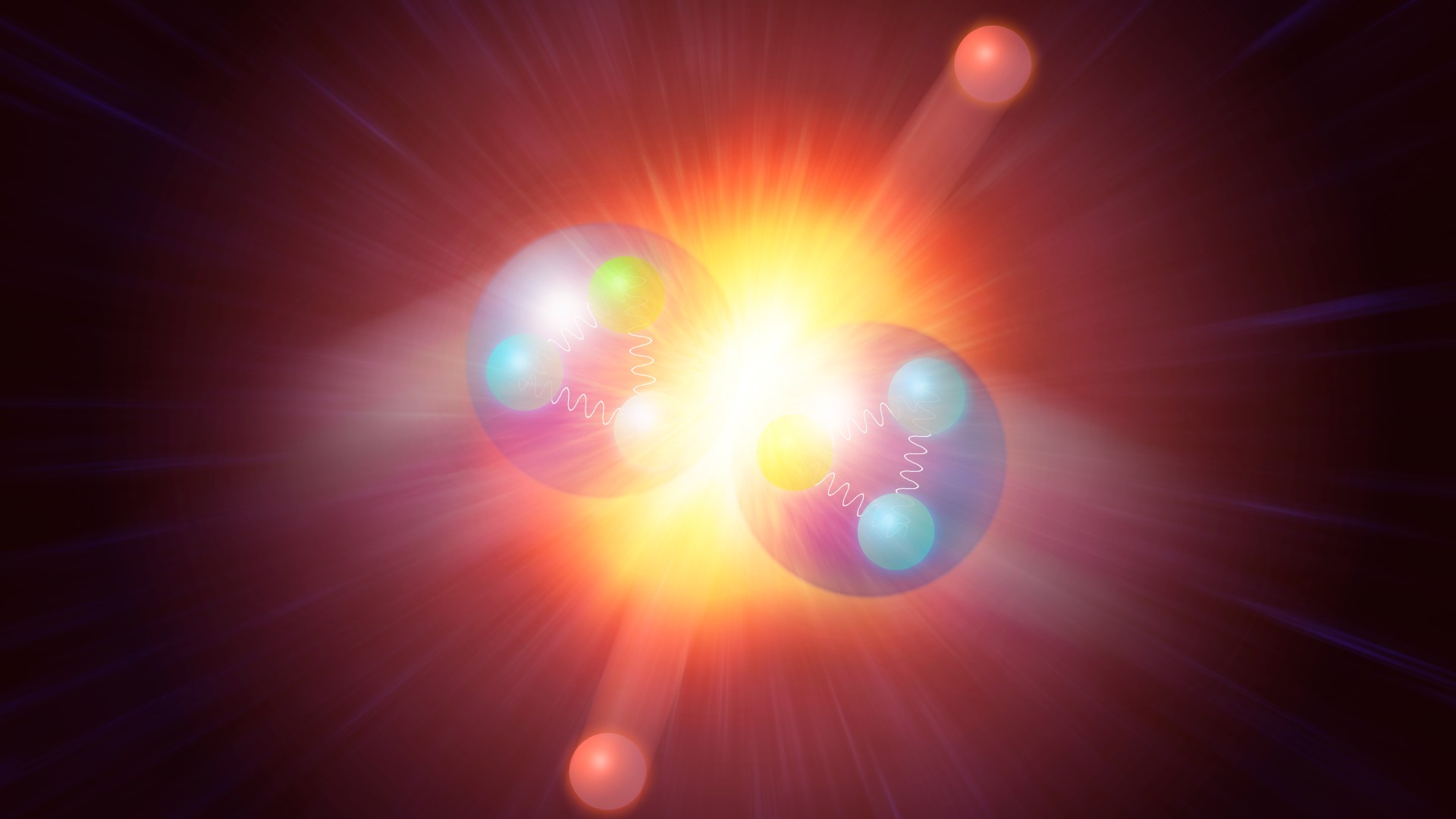The concept of the Higgs boson has captivated the minds of physicists and the public alike since its groundbreaking discovery in 2012. It necessitates a careful dissection of whether this elusive particle is, indeed, ubiquitous among all particles. As we delve into this intellectually stimulating inquiry, one must ponder: is the Higgs boson a universal presence, or is it more of an ephemeral whisper in the grand symphony of the universe?
At its core, the Higgs boson is intrinsically linked to the Higgs field, which permeates the fabric of spacetime itself. But what does this mean for the particles that constitute matter and govern fundamental forces? To answer this, one must first grasp the relationship between particles, mass, and the Higgs mechanism. The prime function of the Higgs field is to impart mass to fundamental particles via the process of spontaneous symmetry breaking. Consequently, it appears that the question at hand is not simply binary; the presence of the Higgs boson must be elucidated within a broader framework.
Particles such as quarks and leptons interact with the Higgs field, absorbing energy and thereby acquiring mass. This phenomenon may bring to mind an intriguing metaphor: consider the Higgs field as a great, undulating ocean, while the particles resemble boats bobbing in these waters. Those boats that navigate through the sea of the Higgs field do so with varying buoyancy, corresponding to their specific masses. A particle’s intrinsic mass thus emerges from its interaction with this omnipresent field, which implores us to reconsider the very essence of mass itself.
However, not all particles are created equal in the eyes of the Higgs field. For instance, photons—carriers of electromagnetic force—remain utterly unaffected by the Higgs mechanism. They glide effortlessly through the Higgs field, imparting no mass to themselves and, as a result, traveling at the speed of light. In stark contrast, W and Z bosons, integral to the weak nuclear force, do interact with the Higgs field and consequently possess mass. This disparity invites us to query: if the Higgs boson is omnipresent, why do some particles remain impervious to its influence?
To further complicate matters, we must consider the implications of gauge invariance and symmetry breaking, which form the bedrock of the Standard Model of particle physics. The Higgs field imparts mass to the weak bosons while preserving the essential symmetries of electromagnetism. In a sense, the Higgs boson serves as the arbiter of balance, mediating interactions and ensuring that the underlying symmetries of particle physics remain intact. This begs the question: is the Higgs boson merely a facilitator of mass, or does its role extend far beyond that of a passive observer in the cosmic theater?
Diving deeper into the dialogue, one might wonder about the fate of theoretical entities like gravitons and their relationship with the Higgs field. While gravitons, if they exist, would be responsible for mediating gravity, they remain elusive and largely speculative. Should this hypothetical particle also play a role in unifying the fundamental forces, could it be susceptible to the Higgs field’s mysterious charm, or is it destined to dance outside its influence?
As modern research progresses, areas such as supersymmetry, dark matter, and quantum gravity contort our current understanding of particle interactions. The prospect of new physics beyond the Standard Model raises further questions regarding the universality of the Higgs boson. Are there other fields, akin to the Higgs field, that govern the masses of yet-undiscovered particles? Perhaps the Higgs boson is not the singular entity it appears to be, necessitating revisions in our models of particle physics.
Moreover, experimental findings from the Large Hadron Collider (LHC) continue to refine our understanding. Ongoing investigations explore whether the Higgs boson decays into particles beyond the Standard Model, potentially revealing hidden sectors of the universe that interact with the Higgs field in unforeseen ways. Such explorations enrich the magnitude of possibilities and emphasize the intricate network of relationships among fundamental particles. Each experiment brings hope that the quest for knowledge may unveil new interactions or particles that either influence, or are influenced by, the Higgs boson.
The tantalizing notion of “Higgsless” models also emerges in this dialogue. Some theoretical frameworks probe the prospect of mass generation without an explicit Higgs mechanism. If compelled by new evidence, the scientific community faces the exhilarating challenge of re-evaluating the very foundations of particle physics. This line of inquiry could render the Higgs boson as merely a chapter in a larger narrative, with unimagined realms of understanding yet unexplored.
The discourse surrounding the Higgs boson is emblematic of a broader phenomenon in physics: the ever-evolving tapestry of knowledge woven from experimentation, theory, and revelation. As physicists dissect the nuances of mass and particle interactions, the question of ubiquity remains pivotal. The Higgs boson is fundamentally tied to our understanding of how particles acquire mass, yet it is not an omnipresent entity within every particle’s core. Instead, it plays a crucial role in a select domain of interactions, emphasizing the sophistication of nature’s design.
In conclusion, while the Higgs boson provides the critical mechanism by which certain particles gain mass, it does not exemplify a universal quality inherent in all particles. The intricate interplay of forces and fields extends beyond the Higgs, beckoning us to contemplate an intricate universe where not all particles are bound to the same fates. As research continues to unfold, one can only marvel at the complexities of existence hinted at through the Higgs boson, with the potential for illuminating even deeper truths that lie in wait.












